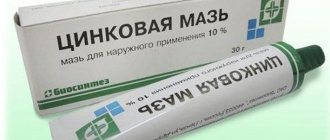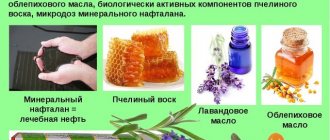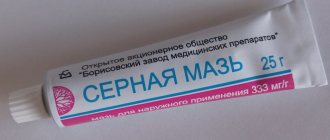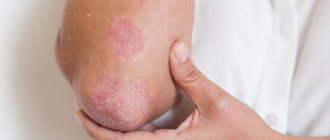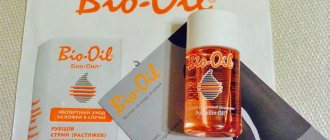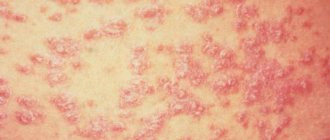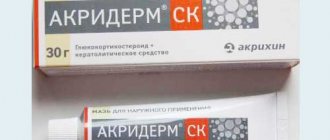Among the preparations for external use there are ointments with a wide spectrum of action. An example of such a medicine is Eplan. It is used for wounds, abrasions, bedsores, burns, herpes and many other skin diseases. It has a bactericidal, anti-inflammatory and analgesic effect. You can buy the ointment at an affordable price in almost any pharmacy.
Eplan ointment: description, composition
"Eplan" is a drug characterized by analgesic, bactericidal, and wound-healing effects. Also promotes tissue restoration after damage. Available in the form of cream and solution. The composition includes the active substance (glycolan) and auxiliary components (water, glycerin, polyethylene glycol and others).
Belongs to the class of dermatotropic drugs, used only externally. Antiseptic, inhibits the activity of pathogenic bacteria, and also counteracts inflammatory processes. In addition, the glycerin contained in the ointment softens the tissues and stimulates their healing.
The drug affects all tissues of the skin, eliminates itching and pain. At the same time, healing occurs at a faster rate, tissues do not die, which allows the skin to remain attractive.
Release form
To understand the principle of action, as well as the effects, let's take a closer look at the composition of each form of the drug.
Eplan cream
So, the cream contains per 100 g of the finished drug:
- 7.2 g of the main component Glycolan, i.e. is 7.2%;
- Polyethylene glycol (cream formulator, prolongator, forms a protective film on the surface of the epidermis);
- Triethylene glycol (solvent, disinfectant and viscosity reducer);
- Ethylcarbitol (solvent, bactericidal substance that causes the death of microorganisms on the surface and in the upper layers of the skin);
- Glycerin (softening agent, has an antiseptic effect);
- Water.
Composition of the cream
It is this complementary combination that allows this product to have a pronounced therapeutic effect.
Cream with box
The cream is produced in aluminum tubes of 30 grams, placed in a cardboard box along with instructions.
Eplan liniment
Eplan liniment (also known as Eplan drops) contains per 100 g:
- Triethylene glycol;
- Ethylcarbitol;
- 8.5 g of the main component Glycolan (the concentration is higher than in the cream, which is due to the liquid form of release);
- Glycerol;
- Water.
Liniment composition
Available in dark 20 ml dropper bottles, placed in a cardboard box along with instructions.
Photo of bottle and box
Eplan 25% urea
This product is intended for the care of the skin of the feet and hands and has the following composition:
- Triethylene glycol;
- Urea (keratolytic, powerful softening agent);
- Ethoxydiglycol (solvent and conductor, promotes uniform distribution of the components of the mixture, as well as delivery of active ingredients to the deep layers of the epidermis);
- Glycolan;
- Glycerol;
- Lactic acid (emollient, softener, has antiseptic properties, helps exfoliate dead dermis and is involved in its renewal);
- Panthenol (vitamin-like healing, regenerating substance);
- Perfume (fragrance).
Available in 30 ml bottles, placed in a cardboard box along with an insert.
Eplan 25% urea
This cosmetic product is a completely non-aqueous solution, which means it is practically not susceptible to contamination by microorganisms and is suitable for treating the hands of personnel, exhibiting good antiseptic and protective properties.
The solution has:
- High softening and healing ability;
- Indicated for hyperkeratosis;
- Keratitis and dermatitis accompanied by keratosis;
- Corns and calluses.
It is a protective means of choice and personal hygiene for cashiers, bank workers and all those professions whose activities involve the contact of large quantities of money, as well as builders, road workers, car mechanics and people whose hands are often exposed to the cold without gloves.
So, when thinking about how to protect your hands at work, remember first of all about Eplan with urea.
Indications, contraindications and side effects
The use of Eplan ointment is indicated in the following cases:
- burns of any nature, including solar and chemical;
- bedsores;
- herpes;
- papillomas;
- warts;
- frostbite of various types;
- ulcers of a trophic nature;
- otitis;
- sycosis;
- pyoderma of bacterial origin;
- psoriasis;
- itching, swelling due to bites of various insects;
- acne vulgaris;
- microbial eczema;
- radiation injuries;
- otomycosis;
- dyshidrosis;
- prophylaxis to protect the skin when working in harmful conditions, for example, in an aggressive acidic environment, with reagents, fertilizers, etc.
As an antiseptic with an anti-inflammatory effect, the ointment is used not only in medicine, but also in veterinary medicine (for the treatment of similar pathologies in domestic animals).
"Eplan" has a safe composition, therefore it is indicated for use in almost all cases, with the exception of individual intolerance. The ointment does not have side effects, but if an allergic reaction occurs, treatment should be stopped and consult a doctor for a possible replacement of the drug.
Cost of the drug
The price of Eplan ointment varies from 150 to 250 rubles per tube.
The solution can be bought for 160-200 rubles.
A solution with urea costs from 190 to 230 rubles per bottle.
Napkins can be purchased for 210 rubles; this is the rarest product on this list.
As you can see, this product is very affordable, unlike many products used for the same indications in dermatology and beyond.
Eplan ointment: instructions for use
The ointment can only be used externally. The affected area is washed, wiped and a small amount of the composition is applied, evenly distributing and rubbing over the surface. The protective effect lasts for 8 hours, after which the procedure can be repeated - i.e. only 2 times a day.
If the skin is significantly damaged by burns, ulcers, purulent wounds, but ointment is applied to the surface. You can also use a sterile bandage soaked in Eplana solution. These steps must be repeated daily until complete recovery.
To prevent skin lesions when working with hazardous chemicals and fertilizers, the cream should be applied evenly over the skin of the hands, using 0.2 g per 1 dm2. To achieve the effect, repeat the procedure 2 times - before starting work and at the end of the working day.
The product in liquid form is easier to apply pointwise to a limited area. You can take it on the go and use it regularly. To prevent the appearance of acne, the solution is diluted with water and wiped over the face, as well as problem areas of the skin.
No cases of overdose have been reported to date. The drug is safe if the described rules are followed. Ingestion is not allowed.
The ointment is used until complete recovery. Multiple doses over several weeks are not excluded. The product is quite effective and does not cause side effects.
EPLAN. UNIVERSAL REMEDY FOR TREATMENT AND HEALING OF BURNS
Answer: When the skin is locally exposed to temperatures above 55-60 degrees Celsius, aggressive chemicals, electric current or ionizing radiation, a BURN occurs. In assessing the severity of a burn, the area of the body surface affected by the burn is of great importance; there are 4 degrees of burns.
Degree I is characterized by damage to the most superficial layer of the skin (epidermis), consisting of epithelial cells. In this case, redness of the skin appears, a slight swelling accompanied by pain. After two to three days, these phenomena disappear on their own, and no traces remain after the burn, except for minor itching and flaking of the skin. Stage II is characterized by the formation of blisters with a yellowish liquid against the background of redness of the skin. Blisters can form immediately after a burn or after some time. If the blisters burst, bright red erosion is revealed. Healing at this stage usually occurs by 10-12 days without scarring. III degree burns are characterized by greater depth of damage with tissue necrosis (necrosis) and the formation of a burn scab. The scab is a dry, light brown to almost black crust; When scalded, the scab is soft, moist, and whitish-gray in color. There is a IIIA degree, in which the epithelial elements of the skin are preserved, which are the starting material for independent wound healing, and a IIIB degree, in which all layers of the skin completely die and the resulting burn wound heals through scarring. IV degree burns are accompanied by charring of the skin and damage to deeper tissues - subcutaneous fat, muscles and bones.
Burns of I-IIIA degrees are considered superficial, and burns of IIIB-IV degrees are considered deep. It is possible to accurately determine the degree of burn (especially to distinguish IIIA from IIIB degrees) only in a medical institution using special diagnostic tests. In domestic conditions, thermal burns most often include: burns with boiling water, steam, iron, sunburn, etc. Burns and scalding with boiling water account for almost 40% of all deaths of children under 15 years of age. In a milder form, this is the most common type of injury for people of all ages.
How to treat burns with a burn remedy - EPLAN?
For first and second degree burns, we suggest using the drug EPLAN in ointment and liquid form. The affected area is lubricated with Eplan and, as it absorbs and dries, the treatment is periodically repeated until complete healing. If burn blisters occur, the exfoliated skin should be removed, but you do not need to open the blisters yourself before going to a medical facility, because this can lead to wound infection. Treat the edges of the wound with an antiseptic (hydrogen peroxide, miramistin, chlorhexidine), apply sterile wipes soaked in the drug and secure with a gauze bandage. Change dressings every other day. Epithalization begins on days 7-9, from the moment granulations appear. The treatment process under bandages is continued with EPLAN liquid (12-14 days). At the healing stage, the edges of the wound are treated with dry sterile wipes (without antiseptics). If EPLAN is immediately applied to damaged areas, redness and inflammation disappear, and blisters with serous fibrous contents do not appear.
special instructions
"Epalan" can be used at any stage of pregnancy, as well as during breastfeeding. It is non-toxic and does not pose a health threat, so it can be used without first consulting a doctor. The only exception is the possible manifestation of allergic reactions due to individual intolerance.
The ointment does not leave greasy marks on clothes, so it can be used to treat different areas. Moreover, due to the presence of glycerin, hands may be “greasy” after treatment. Therefore, it is better to do the procedure at home, before starting work.
Methods of using Eplan cream
Let's figure out how you can use eplan cream in everyday life.
For acne
For inflammation, Eplan is applied to clean, dry skin directly to the site of inflammation at least 2 times a day. After application, do not wet the area, but if you get caught in the rain or sweat in the gym, you must clean the skin and repeat application.
When fighting acne, the cream or solution must be applied under the bandage in the form of applications. Ideally, leave it overnight. For extensive inflammation on the face, you can also use napkins in the form of applications.

